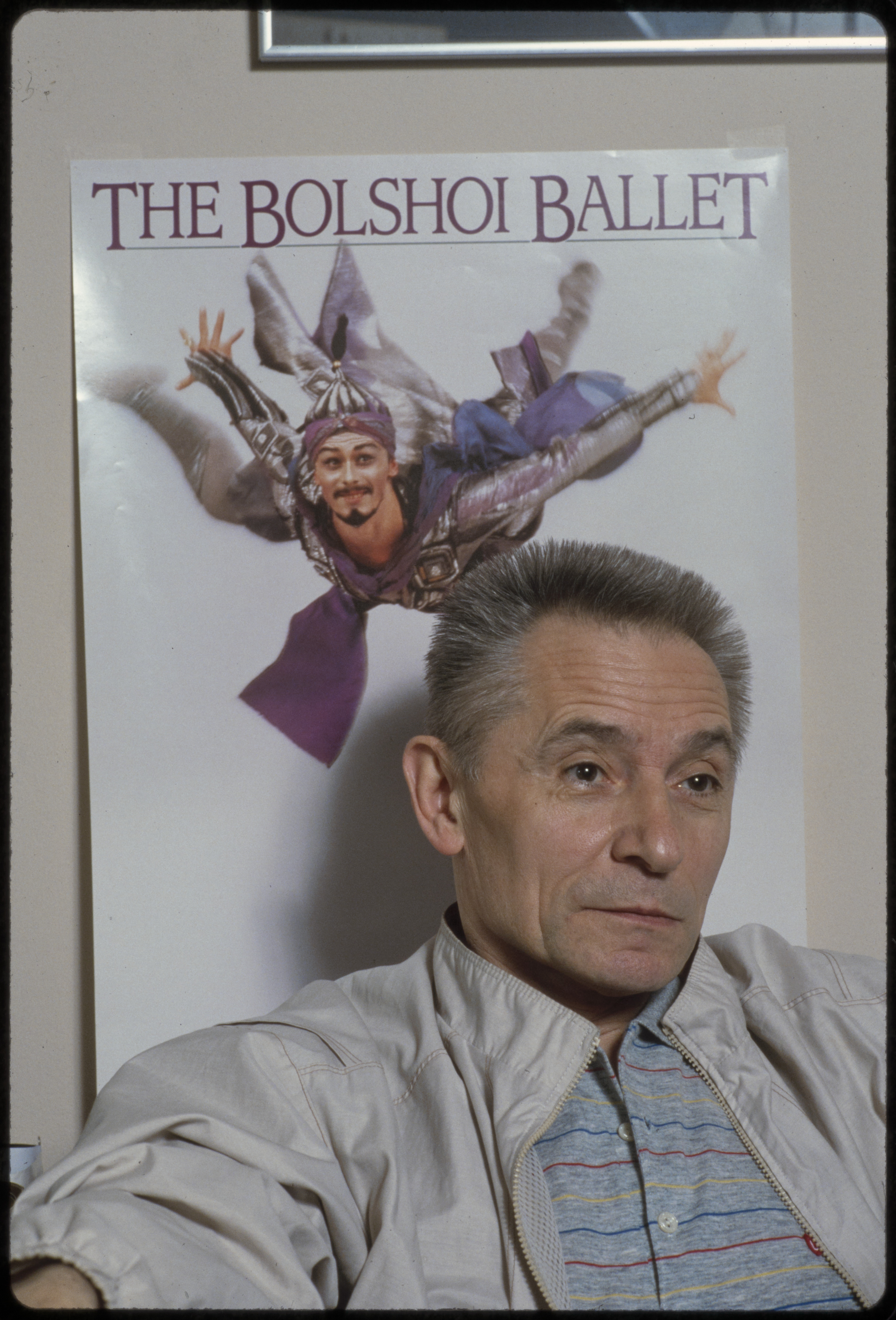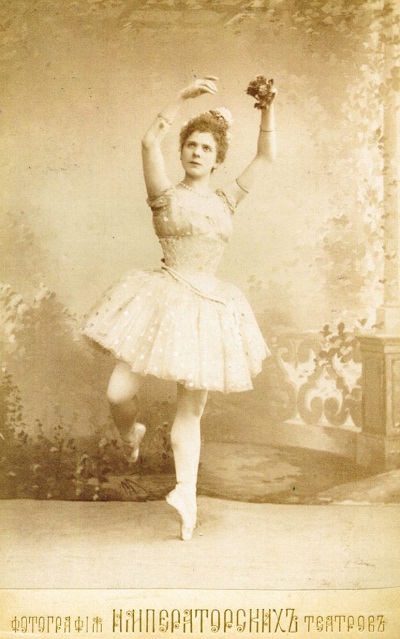|
Ruslan Skvortsov
Ruslan Vasilyevich Skvortsov (russian: Руслан Васильевич Скворцов; born 31 January 1980) is a Russian principal dancer of the Bolshoi Ballet. Biography Ruslan Skvortsov was born in Yelets, Lipetsk Oblast, where he received his early training from Elena Timofeyeva, and then studied at the Moscow Choreographic Academy with Vyacheslav Mikhaylov. Upon his graduation in 1998 he joined the Bolshoi Ballet, where he has worked under the tutelage of Valery Lagunov and Nikolai Fadeyechev. In 2001 he was awarded a bronze medal at the Moscow International Ballet Competition. He was appointed to the rank of principal dancer in October 2009 and was awarded the title of Meritorious Artist of Russia in April 2014. Skvortsov made his debut as the soloist of the Fourth Movement of George Balanchine's '' Symphony in C'' in 1999 and danced his first leading role in an evening-length ballet, Little Count Cherry in ''Cipollino'', in 2000, followed by the Poet in Michel Foki ... [...More Info...] [...Related Items...] OR: [Wikipedia] [Google] [Baidu] |
Yelets
Yelets, or Elets (russian: Еле́ц), is a city in Lipetsk Oblast, Russia, situated on the Bystraya Sosna River, which is a tributary of the Don. Population: History Yelets is the oldest center of the Central Black Earth Region. It was mentioned in historical documents as early as 1146 or 1147, when it was a fort belonging to the Princes of Ryazan. The town's position at the very south of Russian lands made it an easy prey for Turkic conquerors. The Mongols burned it in 1239, Uzbeg Khan ravaged it in 1316, Timur sacked it in 1395, and the Tatars devastated it in 1414. In 1483, the Principality of Yelets was absorbed by the Grand Duchy of Moscow, while the local Rurikid rulers (last heard of in the 19th century) entered the service of Ivan III. In 1591, Boris Godunov revived the largely deserted town by establishing a fortress there. In 1618, the fortress was captured "by subterfuge" by 20,000 Cossacks under Petro Konashevych-Sahaidachny, allied with Władysław&n ... [...More Info...] [...Related Items...] OR: [Wikipedia] [Google] [Baidu] |
The Pharaoh's Daughter
''The Pharaoh's Daughter'' (russian: Дочь фараона, french: La Fille du pharaon), is a ballet choreographed by Marius Petipa to music by Cesare Pugni. The libretto was a collaboration between Jules-Henri Vernoy de Saint-Georges and Petipa from Théophile Gautier's ''Le Roman de la momie''. It was first presented by the Imperial Ballet at the Imperial Bolshoi Kamenny Theatre, in St. Petersburg, Russia, on 18 January (30 January) 1862, with the design by A. Roller, G. Wagner (scenery), Kelwer and Stolyakov (costumes). The principal dancers at the opening night were Carolina Rosati (Mummy/Aspicia), Nicholas Goltz (Pharaoh), Marius Petipa (Ta-Hor), Timofey Stoukolkin as John Bull, Lubov Radina (Ramzaya), Felix Kschessinskiy (King of Nubia), and Lev Ivanov (Fisherman). For Petipa it was the last role: he has finished his career as a dancer; he became ballet master. The Sergeyev Collection, which is part of the Harvard University Theatre Collection, contains choreogr ... [...More Info...] [...Related Items...] OR: [Wikipedia] [Google] [Baidu] |
The Sleeping Beauty (ballet)
''The Sleeping Beauty'' ( rus, Спящая красавица, Spyashchaya krasavitsa ) is a ballet in a prologue and three acts, first performed in 1890. The music was composed by Pyotr Ilyich Tchaikovsky (Opus 66). The score was completed in 1889, and is the second of his three ballets. The original scenario was conceived by Ivan Vsevolozhsky, and is based on Charles Perrault's '' La Belle au bois dormant''. The choreographer of the original production was Marius Petipa. The premiere performance took place at the Mariinsky Theatre in St. Petersburg on January 15, 1890. The work has become one of the classical repertoire's most famous ballets. History Tchaikovsky was approached by the Director of the Imperial Theatres in St. Petersburg, Ivan Vsevolozhsky on 25 May 1888 about a possible ballet adaptation on the subject of the story of ''Undine''. It was later decided that Charles Perrault's '' La Belle au bois dormant'' would be the story for which Tchaikovsky would co ... [...More Info...] [...Related Items...] OR: [Wikipedia] [Google] [Baidu] |
La Sylphide
''La Sylphide'' ( en, The Sylph; da, Sylfiden) is a romantic ballet in two acts. There were two versions of the ballet; the original choreographed by Filippo Taglioni in 1832, and a second version choreographed by August Bournonville in 1836. Bournonville's is the only version known to have survived and is one of the world's oldest surviving ballets. Taglioni version On 12 March 1832 the first version of ''La Sylphide'' premiered at the Salle Le Peletier of the Paris Opéra with choreography by the groundbreaking Italian choreographer Filippo Taglioni and music by Jean Schneitzhoeffer, Jean-Madeleine Schneitzhoeffer. Taglioni designed the work as a showcase for his daughter Marie Taglioni, Marie. ''La Sylphide'' was the first ballet where dancing ''en pointe'' had an aesthetic rationale and was not merely an acrobatic stunt, often involving ungraceful arm movements and exertions, as had been the approach of dancers in the late 1820s. Marie was known for shortening her skirts ... [...More Info...] [...Related Items...] OR: [Wikipedia] [Google] [Baidu] |
Carmen Suite (ballet)
''Carmen Suite'' is a one-act ballet created in 1967 by Cuban choreographer Alberto Alonso to music by Russian composer Rodion Shchedrin for his wife, prima ballerina assoluta Maya Plisetskaya. The premiere took place on 20 April 1967 at the Bolshoi Theatre, Moscow. The music, taken from Bizet's opera ''Carmen'' and arranged for strings and percussion, is not a 19th-century pastiche but rather "a creative meeting of the minds," as Shchedrin put it, with Bizet's melodies reclothed in a variety of fresh instrumental colors (including the frequent use of percussion), set to new rhythms and often phrased with a great deal of sly wit. Initially banned by the Soviet hierarchy as "disrespectful" to the opera for precisely these qualities, the ballet has since become Shchedrin's best-known work and has remained popular in the West for what reviewer James Sanderson calls "an iconoclastic but highly entertaining retelling of Bizet's opera."Sanderson, allmusic.com. Structure The ballet is in ... [...More Info...] [...Related Items...] OR: [Wikipedia] [Google] [Baidu] |
Yuri Grigorovich
Yury Nikolayevich Grigorovich (russian: Ю́рий Никола́евич Григоро́вич; born 2 January 1927 in Leningrad) is a Soviet and Russian dancer and choreographer who dominated the Russian ballet for 30 years. Grigorovich was born into a family connected with the Imperial Russian Ballet. He graduated from the in 1946 and danced as a soloist of the until 1962. His staging of |
John Neumeier
John Neumeier (born February 24, 1939) is an American ballet dancer, choreographer, and director. He has been the director and chief choreographer of Hamburg Ballet since 1973. Five years later he founded the Hamburg Ballet School, which also includes a boarding school for students. In 1996, Neumeier was made ballet director of Hamburg State Opera. Biography Neumeier was born in Milwaukee, Wisconsin, where he received his first ballet training. He continued his dance training in Chicago at the Stone-Camyrn School of Ballet and performed with Sybil Shearer and Ruth Page. After completing a B.A. in English literature and theater studies at Marquette University in 1961, he continued his training in Copenhagen with Vera Volkova and at the Royal Ballet School in London. In 1963 he joined the Stuttgart Ballet under John Cranko, rising to the rank of soloist. In 1969 Neumeier became director of the Frankfurt Ballet, before becoming director and chief choreographer at the Hamburg Ballet ... [...More Info...] [...Related Items...] OR: [Wikipedia] [Google] [Baidu] |
The Three-Cornered Hat
''El sombrero de tres picos'' (''The Three-Cornered Hat'' or ''Le tricorne'') is a ballet choreographed by Léonide Massine to music by Manuel de Falla. It was commissioned by Sergei Diaghilev and premiered in 1919. It is not only a ballet with Spanish setting but one that also employs the techniques of Spanish dance (adapted and somewhat simplified) instead of classical ballet. Composition history In 1916-17, Manuel de Falla composed the music for Gregorio Martínez Sierra's two-scene pantomime ''El corregidor y la molinera'' (''The Magistrate and the Miller's Wife''), built on Pedro Antonio de Alarcón's 1874 novel of the same title. The work premiered at Madrid's Teatro Eslava on April 6, 1917. Sergei Diaghilev of the Ballets Russes had been introduced to de Falla by Igor Stravinsky during the company's first visit to Spain in 1916. He requested permission to use de Falla's already-completed ''Noches en los jardines de España'' (''Nights in the Gardens of Spain'') and the ... [...More Info...] [...Related Items...] OR: [Wikipedia] [Google] [Baidu] |
Léonide Massine
Leonid Fyodorovich Myasin (russian: Леони́д Фёдорович Мя́син), better known in the West by the French transliteration as Léonide Massine (15 March 1979), was a Russian choreographer and ballet dancer. Massine created the world's first symphonic ballet, ''Les Présages'', and many others in the same vein. Besides his "symphonic ballets," Massine choreographed many other popular works during his long career, some of which were serious and dramatic, and others lighthearted and romantic. He created some of his most famous roles in his own comic works, among them the Can-Can Dancer in ''La Boutique fantasque'' (1919), the Hussar in ''Le Beau Danube'' (1924), and, perhaps best known of all, the Peruvian in ''Gaîté Parisienne'' (1938). Today his oeuvre is represented by his son Theodor Massine. Early life and education Massine was born into a musical family on 9 August 1895 in Moscow, Russia. His mother was a soprano in the Bolshoi Theater Chorus and his father ... [...More Info...] [...Related Items...] OR: [Wikipedia] [Google] [Baidu] |
Agon (ballet)
''Agon'' is a 22-minute ballet for twelve dancers with music by Igor Stravinsky. It was choreographed by George Balanchine. Stravinsky began composition in December 1953 but was interrupted the next year; he resumed work in 1956 and concluded on April 27, 1957. The music was premiered in Los Angeles at UCLA's Royce Hall on June 17, 1957, conducted by Robert Craft. Stravinsky himself conducted the sessions for the work's first recording the following day on June 18, 1957. ''Agon'' was first performed on stage by the New York City Ballet at the City Center of Music and Drama on December 1, 1957. The composition's long gestation period covers an interesting juncture in Stravinsky's composing career, in which he moved from a diatonic musical idiom to one based on twelve-tone technique; the music of the ballet thus demonstrates a unique symbiosis of musical idioms. The ballet has no story, but consists of a series of dance movements in which various groups of dancers interact in pairs ... [...More Info...] [...Related Items...] OR: [Wikipedia] [Google] [Baidu] |
Raymonda
''Raymonda'' (russian: Раймонда) is a ballet in three acts, four scenes with an apotheosis, choreographed by Marius Petipa to music by Alexander Glazunov, his Opus 57. It was first presented by the Imperial Ballet at the Imperial Mariinsky Theatre on in Saint Petersburg, Russia. The ballet was created especially for the benefit performance of the Italian ballerina Pierina Legnani, who created the title role. Among the ballet's most celebrated passages is the ''Pas classique hongrois'' (a.k.a. ''Raymonda Pas de dix'') from the third act, which is often performed independently. Today ''Raymonda'' is performed by many ballet companies throughout the world with choreography that is derived primarily from the Kirov Ballet's 1948 revival as staged by Konstantin Sergeyev. Sergeyev greatly altered, and in some cases changed entirely, Marius Petipa's choreography, particularly in the dances for the ''corps de ballet''. The choreography as revised by Sergeyev remains the traditional ... [...More Info...] [...Related Items...] OR: [Wikipedia] [Google] [Baidu] |






